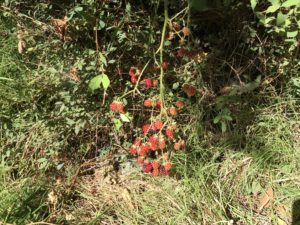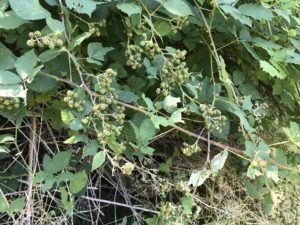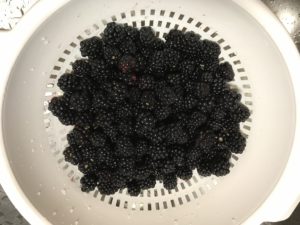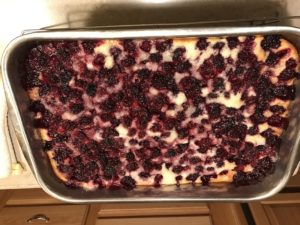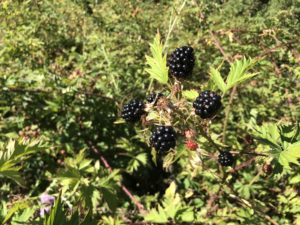 One of the very nice things about living on San Juan Island is the lack of poison ivy. Growing up in Ohio I learned to avoid the places between woods and cleared areas because it was prime poison ivy territory. There is no poison ivy on San Juan Island. Instead, the abundant Himalayan blackberries occupy the transitional habitat between woods and clearings.
One of the very nice things about living on San Juan Island is the lack of poison ivy. Growing up in Ohio I learned to avoid the places between woods and cleared areas because it was prime poison ivy territory. There is no poison ivy on San Juan Island. Instead, the abundant Himalayan blackberries occupy the transitional habitat between woods and clearings.
Himalayan blackberries are not native to the Pacific Northwest. They were introduced in the late 1800’s as a crop to be cultivated. But they quickly spread throughout the area. This blackberry thrives with the abundant rainfall, temperate climate, and summer sunshine.
American Camp is full of Himalayan blackberries. They are along every trail. Because English Camp is more forested, we only have the blackberries in three places: by the parking lot, on the pump house trail, and by the Crook farmhouse. The parking lot and pump house trail thickets have been producing ripe berries for several weeks now. The bushes by the Crook farmhouse get less sun so their berries are still very green.
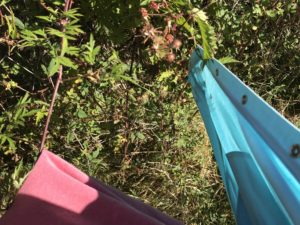
Picking the Himalayan blackberries is a sticky process because the vines are covered with long prickles that love to grab and pull clothing. A couple of weeks ago I decided to make Blackberry Buckle, which takes four cups of berries. Tom went with me and held back the vines with sticks as I reached in for the ripe berries. It seems like the best, ripest berries are always the furthest in. Of course, the ones farther out get picked. I had plenty of snags on my clothing and scratches on my skin before we were done.
The ripe blackberries are delicious. I always think that berries picked fresh off the sunny vines taste like sunshine. They are big, juicy, and sweet. The Blackberry Buckle turned out very well. I am enjoying being the beneficiary of nature’s bounty thanks to the Himalayan Blackberries here at English Camp.

